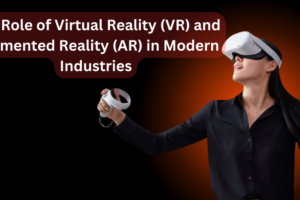Artificial Intelligence (AI) has made enormous strides in recent years, and in 2025, it will play a critical role in numerous industries. Two of such subdivisions of AI are Generative AI vs. Predictive AI These two branches are revolutionizing the sphere of how companies and individuals manage work, make decisions, and create content. Both kinds of AI have their distinguishing characteristics and applications, making an analysis of the composition and roles of AI for defining the further application of these technologies.
However, the recent advancements in generative AI development services also permit entities to generate new and unique text, images, or audio. On the other hand, Predictive AI involves the use of data to develop a prediction of the occurrence of future events with high accuracy. The following are two approaches to using AI, the intent of which is quite different, but each has significant consequences in sectors such as healthcare, media, finance, and the like.
In this article, we will first differentiate Generative AI vs. Predictive AI, second we will find out some of the main uses and third identify what more they can do in the future.
What is Generative AI?
Generative AI is a process and model that aims at producing new content through the use of artificial intelligence. It is capable of generating things ranging from photo-realistic images to sensible text, as is creative. The special feature of Generative AI is the fact that this system is capable of functioning without any prior predefined regulations.
Nowadays, generative AI development services are becoming more popular in different industries by giving businesses the means to generate unique content at a high speed. These services are especially significant in industries such as marketing as well as entertainment in which consumers are increasingly turning to AI driven music, videos and art.
What is Predictive AI?
While predictive AI involves using AI to make decisions on what course of action needs to be followed, Predictive AI is the use of past occurrences to forecast future events. These AI models are created after analyzing huge amounts of data and using statistical methods, machine learning techniques, and data mining to find patterns. Using such patterns, Predictive AI can predict events, including trends like stocks, customers’ behavior, or even health risks.
Common examples of predictive AI include:
- Recommendation Engines: There is learning AI used in Netflix, (Amazon) and Spotify, where they recommend TV shows, products, and songs, among others, depending on the user’s past actions.
- Predictive Maintenance: To illustrate the use of AI in manufacturing, Ai systems that used in manufacturing were the ability to predict equipment failures before they occur.
- Customer Analytics: AI models that were employed for predicting consumer behavior in sectors such as sales and finance.
Key Differences Between Generative AI and Predictive AI
1. Purpose
- Generative AI: The first is in generating new content, or in mimicking data or human-generated creative output in one or another form.
- Predictive AI: The aim is predictive power, meaning that based on the existing data and finding patterns, it is possible to predict future events.
2. Type of Learning
- Generative AI: Usually employs the use of techniques such as unsupervised learning or reinforcement learning in which the AI is trained to create data without having controlled datasets.
- Predictive AI: Primarily employed supervised learning, which entails using models based on previous training with labeled data to make future predictions.
3. Data Usage
- Generative AI: Unlike predictive AI, generative AI isn’t supposed to produce new contents based on the current available data. It is flexible with the inputs that are fed to it and can yield reasonable outputs even with the least of inputs.
- Predictive AI: Predictive AI mainly works by feeding historical data into it and hence can be greatly dependent on it.
Applications of Generative AI in Clinical Healthcare
Applications of Generative AI in Clinical Healthcare are already causing ripples in the healthcare sector. This is done through generating new molecules for drug discovery, developing a modeling system for a patient’s contraction, and aiding in medical imaging. By 2031, most healthcare experts believe that 64% of clinicians will depend on AI for clinical decisions.
For instance:
- Drug Discovery: Molecules designed with the help of artificial intelligence can help to find new potential drugs faster than the traditional approaches can help.
- Personalized Treatment Plans: With the help of such AI technologies as generative ones, doctors can predict the outcome of different treatment strategies and select the most appropriate treatment for a patient with regard to his genotype and other characteristics.
- Medical Imaging: The use of generative AI can be applied in either development of artificial medical images for training or improving diagnostic techniques in imaging techniques.
Predictive AI in Healthcare
It is imperative to mention that the use of Predictive AI provides its own suite of forceful solutions in the healthcare industry. Through evaluation of the past patient records, it is possible to determine potential future diseases’ trends, potential deterioration of the patients and the possible lines of treatment.
For example:
- Predictive Diagnostics: AI solutions include prediction of patient status achieving better prognosis of early symptoms of diseases including cancer or diabetes.
- Treatment Optimization: AI can study outcomes of treatments and identify what kind of interventions would provide the best results among patients, which will benefit the patients.
What are the Usages in Other Industries?
Generative AI Development Services in Media and Entertainment
Generative AI development services are considered a crucial element in media and entertainment, where it will produce content that varies in character creation for games and script-writing. In the entertainment industry, the relationship between AI and the users has been productive as AI has helped in coming up with interesting ways of entertaining the users. Some notable applications include:
- Game Design: AI creations of environments, characters and story plots without human interference.
- Music and Film: AI-driven creation and design that helps finish projects at a much faster rate and with less money.
Predictive AI in Finance
AI has been in use in the finance industry for several years in such areas as risk modeling, fraud identification and forecasting of markets. Being able to harness huge volumes of data, AI is capable of estimating fiscal prospects and enabling business entities to undertake wise investment. Key applications include:
- Risk Management: Fintech protective implications/FRA predict financial risks and propose means of risk mitigation.
- Fraud Detection: Fraud can also be detected by PAI, through analyzing the transactions that occur and look for the presence of different and unexplainable patterns.
The Future of AI: Generative and Predictive AI in 2025
In future Generative AI vs. Predictive AI will remain significant in various industries specifically by the year 2025. As the technology develops, there will be creation of more combined systems of AI where aspects from both approaches will be implemented.
For example:
- Healthcare: With Generative AI treatment options can be developed and with Predictive AI patient outcomes can be predicted which will enhance patient care.
- Finance: In a way, while the predictive models could detect the movements within a market or industry, the generative models could generate possible events in a monetary system, hence presenting a more dynamic view of risk.
Conclusion
Organizations shall continue to adopt Generative AI vs. Predictive AI as the world transitions to 2025. They are strategic in operation, serving Generative AI for content production and Predictive AI for data analysis. The difference between these two will be important when the business wants to look for ways of making it in the future with the help of Artificial intelligence. The use of generative models grants industries creativity, while the use of predictive models grants foresight, hence boosting performance and innovation.

















